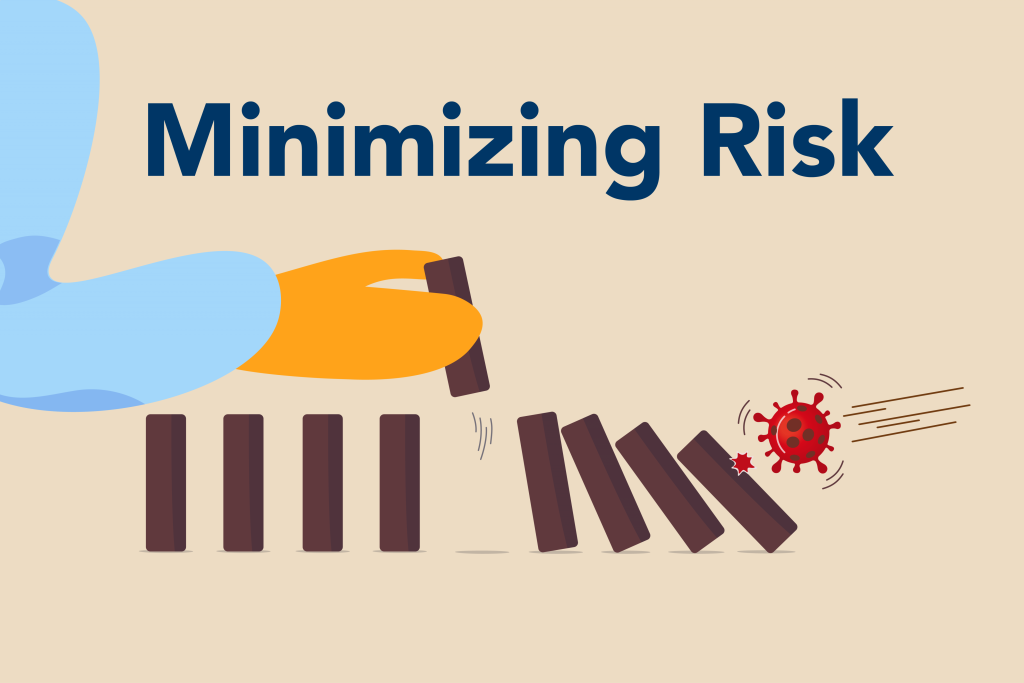What is the biggest villain in the contamination control and cleanroom world? Particles. Contamination. This contamination can cause yield and financial loss, delays, frustration, and physical threats to the end user. It is something that should be avoided wherever possible.
To minimize contamination risk in your cleanroom, you first need to understand what contamination control is.
What Is Contamination Control?
Contamination control is just that: controlling contamination. This is necessary when developing products, doing research, or other applications that could be put at risk if contaminated. Contamination can include anything from fungi to dust to skin and hair particles. These contaminant particles are much smaller than the human eye can see. Thus contamination control is not just wiping things down or keeping things clean: it is a microscopic art and science.
Contamination control involves monitoring the air, water, equipment, humans, ingredients, and every thing that comes into contact with the item that is at risk. It involves an extensive plan and equipment to make that happen. Perhaps the most fundamental part of contamination control is a cleanroom.
What Role Do Cleanrooms Play In Contamination Control?
Cleanrooms are your frontline in contamination control. A cleanroom is a room or system of rooms with a highly controlled environment. They use extensive air filtration technology and air distribution strategies to maintain particle-free air. Additionally, they use extensive cleaning and gowning protocols for every item and person that enters the room to prevent contamination. Depending on the level of cleanliness of the room, it will be classified at different levels.
In order to be classified and to maintain levels of cleanliness, cleanrooms are monitored for particle contamination. Depending on the application of the cleanroom, different sensors might be used, but some form of particle counter is typically always used.
How Does Contamination Occur In A Cleanroom?
If cleanrooms are so highly monitored, regulated, and maintained, how does contamination occur in the first place?
Just like with most things in life, mistakes can happen. One of the most common sources of contamination in a cleanroom is humans. We are responsible for 75%-80% of cleanroom contamination. This is usually the result of poor gowning.
On top of that, a poorly maintained cleanroom will be at risk for contamination. Understanding and changing your filters is critical, because an old filter can allow for contamination. Moreover, if the contamination is viable, meaning that the particles are living organism, it can grow and spread. This would be contamination such as fungi, yeast, or bacteria. Spread throughout the cleanroom could become detrimental.
Even if the contamination is nonviable, or nonliving, it can still get in through a poorly maintained or designed filtration system. It can also still pose a risk to your cleanroom’s application.
Another way contamination can occur through poor maintenance is if components, tools, and surfaces are not cleaned well enough. Before anything comes into the cleanroom, it should be thoroughly cleaned, but failing to do so can lead to harm.
Particles can be generated in the cleanroom, as well. Machinery sheds oil and microscope metal particles when it moves. Humans constantly shed skin cells. Paper sheds particles when it is ripped. Pencils shed lead particles when they are used.
Everything has the potential to release particles and cause contamination. That is why it is important to ensure you are using cleanroom grade items in your cleanroom.
But what else can you do to minimize contamination risk in your cleanroom?
3 Ways To Minimize Contamination Risk In Your Cleanroom
True risk mitigation starts in the design of your cleanroom and air flow strategy. But chances are, you are not in the position to completely rehaul your cleanroom set-up, so there are things you can do today to start minimizing your contamination risk.
Decontamination
This method is very straightforward: you need to decontaminate. Decontamination occurs both inside and outside cleanrooms.
On the outside: everything needs to be decontaminated before it enters. This means all your tools, components, surfaces, everything. The area where it needs to be decontaminated should also be relatively free of particles.
On the inside: there should be routine maintenance and cleaning to manage particles generated inside the cleanroom. This includes wiping down surfaces, tools, and equipment inside the cleanroom.
Improve Training
Have you ever heard of the forgetting curve? This model tells us we forget a massive amount of information right after we learn it! We’re not talking about 10% of what you learned: we are talking about the majority of what you learned. Additionally, as time goes on, we forget more and more.
There are so many details and nuances when it comes to cleanrooms and gowning, it is easy to imagine how many of it is forgotten between trainings. This is especially true if the trainings are boring or repetitive, because we often just stop listening when that is the case.
We cannot overstate the importance of regular, engaging trainings for all your employees. Training will decrease gowning mistakes and improve cleaning regimens, amongst a myriad of other benefits.
Real Time Monitoring
We also recommend implementing a real time monitoring system in your cleanroom. This is a system of particle counters, sensors, and software that provides immediate feedback about your cleanroom. This means that if there is any form of a contamination event in your cleanroom, you will know immediately and can rectify the issue.
While this might not decrease contamination risk at the moment, it significantly decreases prolonged contamination risks. Because you can instantly address the situation, as well as determine the difference between contamination trends and anomalies, you should see future decreased yield loss, less down time, and improved efficiency.
If you want to learn more about real time monitoring systems and their benefits, click here.


